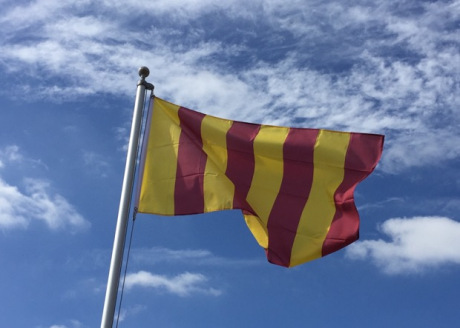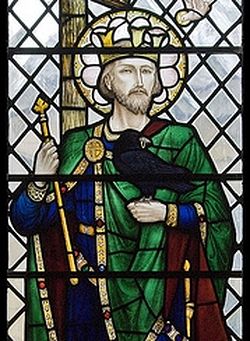Dec-2020
St Oswald of Filey and Northumbria
He was the first English king to die a Christian martyr, a romantic hero, the exiled prince who won and lost his kingdom in battle and proclaimed a saint. His name is hidden in plain sight among the hills and dales of northern England. He was St Oswald, in honour of whom Filey’s twelfth century church is named.
Filey St Oswald’s has stood sentinel on its hillside overlooking the town for nine hundred years. The breadth of history its old stones have witnessed is quite staggering, its name, St Oswald’s takes us back even deeper into history, some fourteen hundred years, to Dark Age Britain and the lost Kingdom of Northumbria.
Oswald was driven into exile, at Iona in the Western Isles, when his uncle Edwin became King of Northumbria. Edwin was eventually killed in battle fighting a joint Mercian-Welsh army at the Battle of Hatfield Chase in 633. In the aftermath of the battle the Gwynedd King Cadwollen ravaged Northumbria. The Venerable Bede described it as ‘the darkest days in the history of Northumbria’. Cadwallon ravaged the almost defenceless land. Villages burned, livestock was raided and Queen Æthelburh, along with Paulinus, Bishop of York, fled to exile in Kent.
However, as Northumbria burned, on the Isle of Iona plans were being laid for the return of Oswald. So long in exile, he set his plans for lightning sea-borne attack on Cadwallon, whose army was encamped near Hexham in the Tyne Valley. Oswald’s war band probably sailed up the Solway Firth and destroyed the army of Cadwollen at Heavenfield near Hexham.
The night before the battle Oswald was said to have been visited by a vision of St Columba, his former teacher at Iona. A wooden cross was set up on the site and to this day there is a wooden cross and subsequent church at Heavenfield. Oswald established a monastery at Lindisfarne, which became the base from which the mass conversion of the peoples of Northumbria began under the tutelage of St Aidan. It is undoubtedly the most enduring legacy of Northumbria, the introduction of Christianity into these islands and the writings and gospels created by monks living within Northumbria.
Oswald extended Northumbrian control into the Kingdom of Lindsey (North Lincolnshire) and in 638 even besieged what is today Edinburgh, bringing Lothian and much of Dumfries and Galloway into the Kingdom of Northumbria. King Oswald of Northumbria rose to be one of the most powerful men in Britain and was at one point referred to in the Anglo-Saxon Chronicle as being at one point the ‘Bretwalda’ or Emperor of Britain. However, the pagan Mercians, whose kingdom covered much of the midlands of England, with its capital at Tamworth, were a constant threat to Oswald’s Christian kingdom in the north. It was during the Battle of Maserfield with the Mercians, thought to be near Oswestry on the Welsh border, on 5 August 641 that Oswald was killed.
Oswald soon came to be regarded as a saint. The place where he died came to be associated with miracles. Pilgrims began to dig soil from the site and soon a hole was dug as deep as a man’s height. However, it was due to his work in spreading the word of Christianity that Oswald was proclaimed a saint, in part due to the writings of, perhaps Northumbria’s most famous inhabitant, the Venerable Bede. At Jarrow in 731AD he wrote one of the most important books ever written, An Ecclesiastical History of the English People.

The Stripes of St Oswald, the symbol and flag of the Kingdom of Northumbria. Today a version represents the modern day county of Northumberland.
The Cult of Oswald took hold and even spread into continental Europe. Oswald’s bones became a moveable feast, they were installed at Bardney Abbey in North Lincolnshire, but in 909, in a raid led by Æthelflæd, the daughter of Alfred the Great, Oswald’s remains were taken to what became St Oswald’s Priory at Gloucester. However, Oswald’s head is said to be buried at Durham Cathedral, along with the remains of St Cuthbert. Astonishingly, there are also four other claimed heads of St Oswald in churches across Western Europe! One of his arms is said to have been at Peterborough Abbey. There are churches, and communities, named Kirkoswald in Cumbria and south west Scotland, as well as countless churches named St Oswald’s across Britain, one such being St Oswald’s of Filey.

St Oswald of Northumbria

comment this post